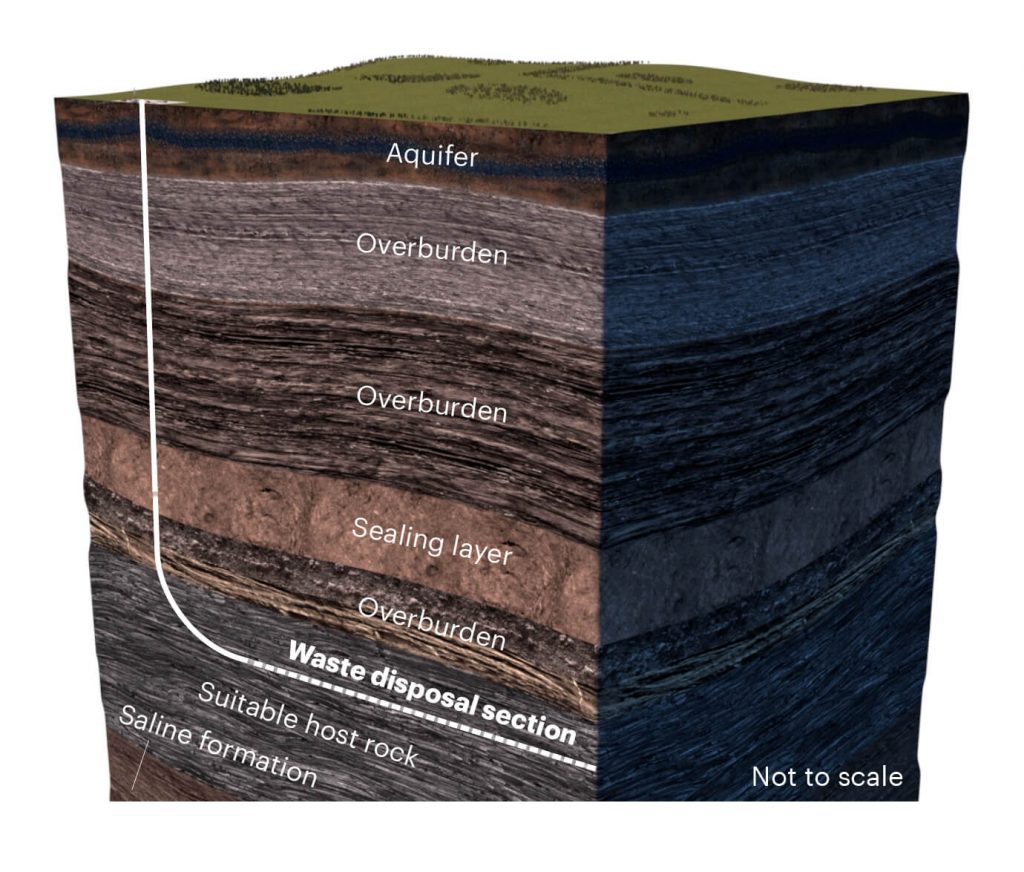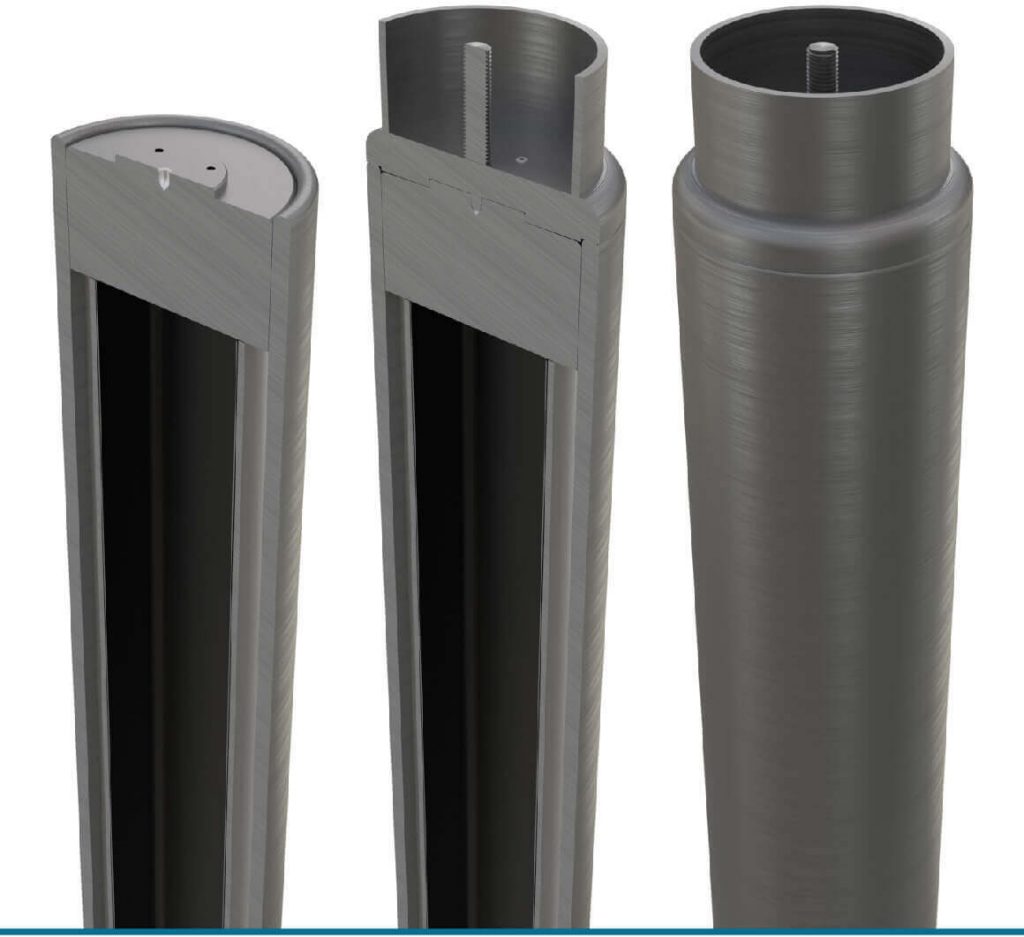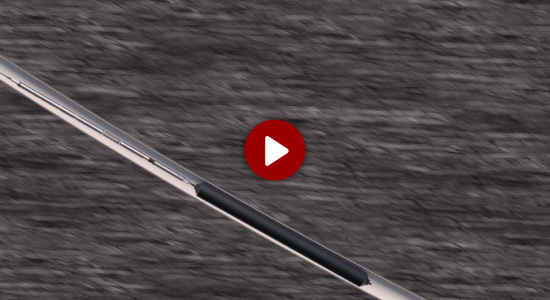Deep Isolation’s nuclear waste repository leverages directional drilling to isolate spent nuclear fuel and high-level radioactive waste in deep boreholes located underground in suitable rock formations.

Spent Nuclear Fuel
Spent nuclear fuel from present day light water reactors is commonly composed of dense, compact pellets made of uranium dioxide and stored in a fuel assembly made of zirconium alloy that can hold 22,000 to 92,000 pellets.
When these pellets have completed their lifecycle, the assemblies along with their pellets are removed from the reactor and placed in cooling pools. After several years the radioactivity has decayed to the point where dry storage or disposal is possible. About one third of the current nuclear waste is stored in dry casks above ground at the nuclear reactor sites. This is considered to be interim storage. There is not yet any location ready to take this spent fuel for disposal.
Deep Borehole Disposal
Rather than excavating large tunnels in a mine, Deep Isolation uses directional drilling technology to place waste hundreds of meters underground within stable geological formations.
Borehole repositories can provide substantial isolation for many types of high-level waste in a wide range of locations. Because it can be implemented modularly, it is well suited for smaller inventories of waste or as a complement to an existing repository.
Placement and retrieval methods for borehole equipment are highly developed and are commonly performed using wirelines with a tractor, coiled tubing, or drill-pipe methods. Regulations may require that high-level waste disposed of in a deep geologic facility be retrievable. In the drilling industry, retrieval of objects from deep boreholes is routine.

Natural Barriers
A deep borehole repository takes advantage of the exceptional isolation properties of geologic formations whose past stability can be verified to have endured for millions of years.
The disposal zone is far below drinking-water aquifers, in a region in which water has had no contact with the surface for a million years or more.
Deep, stable rock formations hundreds of meters underground provide:
- Physical separation of billions of tons of rock between the waste and the surface provides protection for both.
- Long migration distances and correspondingly long travel times, allow radioactive particles to decay before they could reach the surface.
- Stable geological and hydrogeological conditions and a geochemically reducing environment decrease the maximum concentration at which radionuclides can migrate.
Engineered Barriers
Engineered barriers, such as specially designed canisters and borehole sealing, enhance repository safety and geologic isolation of nuclear waste. After hundreds of thousands of years, engineered barrier systems may fail, and the isolation of waste depends on the host geology as a protective, natural barrier.
- Read more on the importance of borehole sealing.
- Learn more about canister corrosion over time.

Horizontal Borehole Repository
Using directional drilling, Deep Isolation can place nuclear waste in long, narrow 18-inch wide horizontal boreholes in rocks that have been stable for millions of years. No humans need to go underground.
The Deep Isolation horizontal repository begins with a vertical access hole extending thousands of feet deep and will then gently turn horizontal. Canisters containing nuclear waste would be stored in the deep horizontal section.
Benefits of this signature design:
- One borehole disposal zone (~1.5 km long) can store 6 years of waste from a Boiling Water Reactor (BWR) and 10 years of waste from a Pressurized Water Reactor (PWR).
- There is more flexibility in siting because directional drilling can access suitable rock formations at a greater range of depths and in a greater range of geological locations.
- Since canisters are placed end-to-end, there are no stacking pressures in the horizontal section.
- There is low heat and waste loads in linear, end-to-end placement of individual canisters.
- Separate access (vertical) and emplacement sections (horizontal) means no collision with previously emplaced waste canisters.
Repository Safety & Security
A deep borehole repository for nuclear waste will be designed to ensure the depth and configuration of the repository benefits from the geology, thus maximizing safety performance. This performance is measured by the radiation exposure risk to humans and the environment.
Common Background Radiation Sources

The estimated maximum radiation dose from a generic horizontal borehole repository is considerably lower than a 10 mrem (100 microsieverts) dose standard, which is less than a chest x-ray, even in extreme and/or unlikely cases where engineered barrier systems, such as the canister, fail immediately.
Measuring the residence time of the brine that exists in the rock layer at the depth of the repository provides a measure of how isolated the formation has been in the past, which is a strong indication of its suitability as a host rock for a radioactive waste repository.
Learn more about how safety performance is calculated.
Comparing Annual Radiation Dosages


Directional Drilling Safety
Experience with oil and gas drilling shows that the drilling itself does not trigger earthquakes; the observed earthquakes from oil and gas fracking come from the high-pressure injection of fracking fluids and waste waters underground. There is no fracking performed when constructing and operating a borehole repository.
Non-Proliferation
The location of the deep underground horizontal repository also offers additional barriers against human intrusion and terrorist attempts.

Additional Resources

Disposal of High-Level Nuclear Waste in Deep Horizontal Drillholes
Dr. Richard Muller introduces our method and issues pertaining to safety requirements.

Thermal evolution near heat-generating nuclear waste canisters disposed in horizontal drillholes
This paper examines the thermal evolution around heat-generating waste for a wide range of material properties and disposal configurations.

Post-Closure Safety Calculations for the Disposal of Spent Nuclear Fuel in a Generic Horizontal Drillhole Repository
Preliminary safety calculations for the disposal of spent nuclear fuel in a generic deep horizontal borehole repository published in the peer-reviewed journal, Energies, by MDPI. May 2020

Deep Isolation Intellectual Property
Learn more about the Deep Isolation technology patents for storing hazardous material in a subterranean formation.

